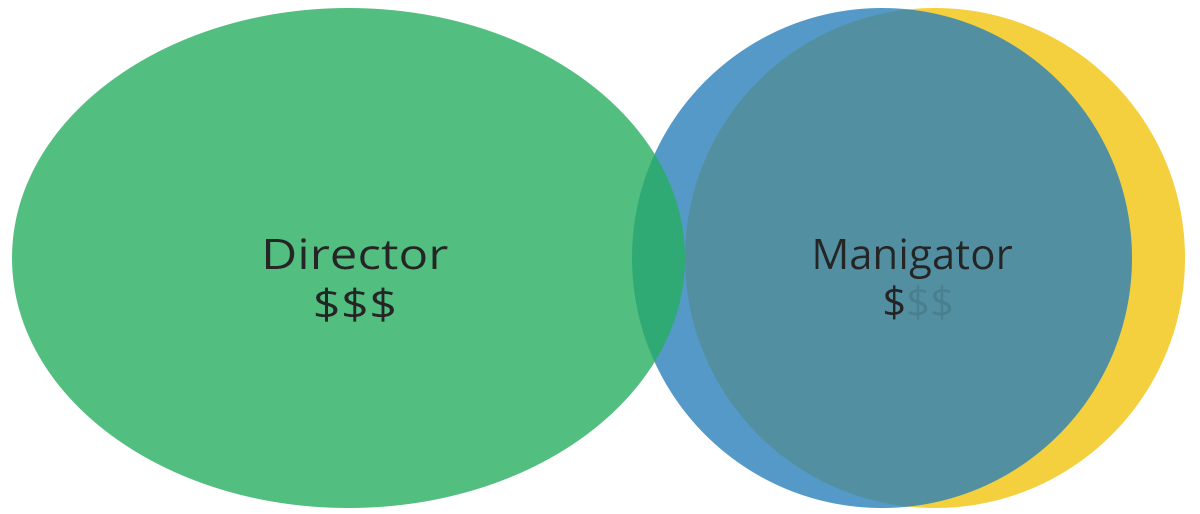It’s no secret nonprofit performing arts admins are overworked and underpaid. Fortunately, the issue is starting to get more attention but that hasn’t done much to curtail what I’ve noticed as a growing trend of stuffing an increasing amount of duties and responsibilities into single positions.
Traditionally, you’ll find something resembling the following three-tiered structure at most arts orgs:
- Director = Mid to late career, $$$ pay, runs a department, determines strategy and is responsible for outcomes.
- Manager = Mid-career, $$ pay, executes Director’s strategy, exercises a degree of independent decision making.
- Coordinator = Entry level, $ pay, assists Managers with detail-oriented tasks (i.e. grunt work).
Job descriptions (JD) typically reflect these basic levels of responsibility, requisite skill sets, and required experience. Overlap between positions would resemble something like this:

Across budget tiers, there’s always a bit of wiggle room, but it’s becoming increasingly common to see organizations engage in “creative downsizing” by combining Manager and Coordinator duties and responsibilities into a new position with a stuffed title, but hardly more pay than the previous coordinator role.
The resulting structure is like a blanket that’s a little too small to cover everything.
There’s no way to get all the previous work done so in order to cover as best as possible, Director positions get stretched and some of the combined Manager/Coordinator work simply gets lost. The result is a turducken structure that is almost certainly not sustainable.

You can tell when groups are beginning to fall victim when they start releasing openings with position title like “Managing Coordinator” or the less creative Director/Manager.
I do worry about the sustainability of the current nonprofit performing arts workforce. Expectations, job advancement, job satisfaction, wages and benefits, and responsibilities are combining to create a particularly caustic work environment that burns out too many good managers.
The only thing I can promise is it will get worse before (if?) it gets better unless the field starts to make it a priority.


